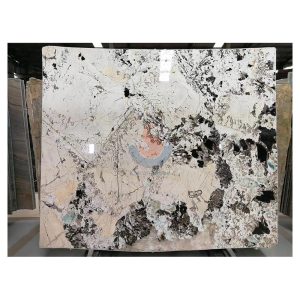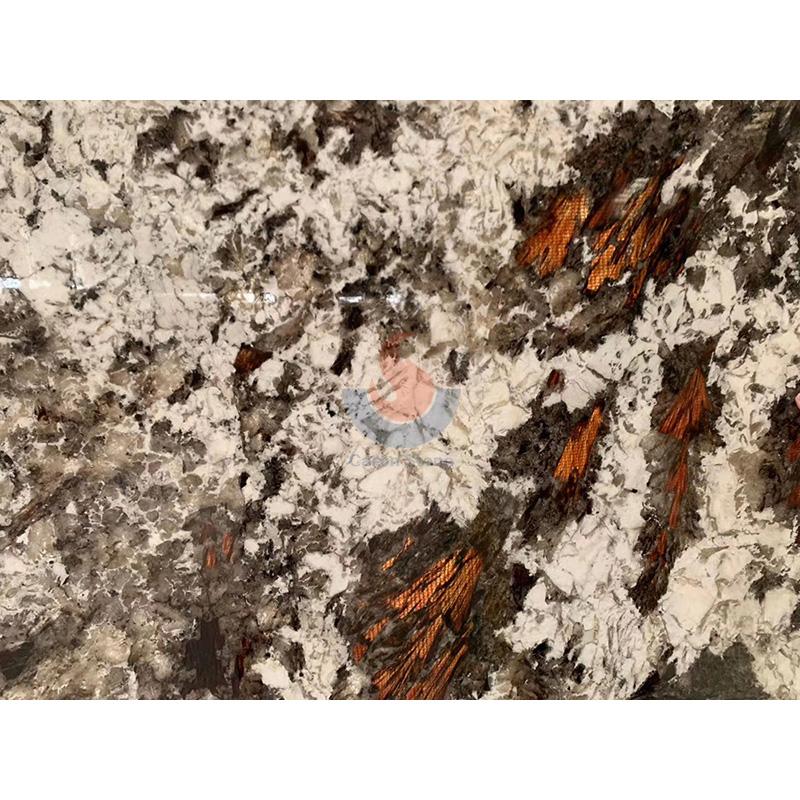The kitchen is the heart of the home. It is not only a place for cooking delicious food, but also an important space for family members to communicate with each other. Selecting the appropriate countertop material is absolutely vital while decorating the kitchen. Granite has become the first choice for many families because of its beautiful, durable and easy-to-clean characteristics. But given kitchen decoration, how much granite are we really need? This question seems simple, but in actual operation, it involves multiple factors, such as the layout of the kitchen, the thickness of the granite, and edge treatment. This article will lead you to explore this topic in depth to help you make a more informed decision when decorating the kitchen.

Factory direct low price luxury marble patagonia marble granite slab translucent pandora quarzite white onyx
granite demand and kitchen layout
The layout of the kitchen directly determines the amount of granite required. Usually with longer counters in traditional L-shaped or U-shaped kitchens, more granite is needed proportionally. In addition to the regular countertops, kitchens with island designs may also require additional granite for the island, which further increases the demand for granite.
Take a common L-shaped kitchen as an example. With an assumed long side of three meters and a short side of two meters, the granite area needed for the countertop by itself comes to roughly six square meters. Should an island be built, the area may reach over 8 square meters. This area is only calculated for the plane part. The real granite needed will be much more if one considers the height of the countertop and other edge treatments.
In addition, the actual use requirements of the kitchen will also affect the amount of granite used. The necessary granite area will rise, for instance, if you choose to install a large-sized sink in the kitchen or require extra workbench space.
The relationship between granite thickness and demand
The thickness of granite is usually 2 cm or 3 cm, which is also one of the important factors affecting the demand for granite. Granite’s volume increases with increasing thickness; the related cost increases as well. Therefore, it is very important to choose the right thickness when the budget is limited.
For general family kitchens, 2 cm thick granite is enough for daily use. Granite with 3 cm thickness can help you to choose a countertop more resistant. However, as the thickness increases, the difficulty of installation will also increase, especially when dealing with edges and corners, more professional technical support may be required.
Granites of different thicknesses also have different visual effects. While thinner granite seems lighter and more modern, thicker granite makes one feel secure and opulent. Therefore, when choosing the thickness of granite, in addition to considering actual needs, it should also be combined with the overall style of the kitchen and personal preferences.
Edge treatment and granite consumption
Edge treatment is also one of the important factors affecting the amount of granite used. Granite’s edges can be treated generally in several ways: straight edges, chamfered edges, arc edges, etc. Various approaches of treatment influence not only the appearance of the countertop but also the real material consumption.
Take the straight edge as an example. This edge treatment method is the simplest, and usually only basic cutting of the granite is required, so the material consumption is less. Although the material consumption is somewhat significant, the arc edge or chamfered edge calls for more granite for carving; however, the aesthetics is also better.
In addition, if you want to add some special decorative elements to the kitchen countertop, such as a built-in granite sink or countertop extension design, the amount of granite required will increase further. For these additional design requirements, it is recommended to communicate with the designer before starting the decoration to accurately estimate the demand for granite.
Granite cutting and installation loss
In addition to design and actual use requirements, the cutting and installation process of granite will also produce certain material losses. This is because when cutting granite, some small pieces of material may not be used, or errors may occur during the installation process and additional materials may be needed for repair.
Generally, the loss rate of cutting and installation is between 5% and 10%. That is to say, should your kitchen require 8 square meters of granite, you might have to set aside 0.4 to 0.8 square meters of material to handle probable losses when you really make purchase.
It is worth noting that choosing a professional installation team can effectively reduce losses, because experienced workers can measure and cut more accurately, thereby maximizing the use of materials. In addition, it is also very important to confirm the specifications and quantity of granite with the supplier before installation to avoid unnecessary waste.
The impact of different granite types on the amount
Granite comes in several varieties, and each one has unique texture, color, density, etc.; these factors could also influence the real weight. For example, some darker granites are more prone to cracks when cutting due to their harder texture, so more materials need to be reserved to deal with these potential problems.
In addition, granite with complex textures requires more precise alignment when cutting to maintain the continuity of the texture. In this situation, more stone could be required to guarantee the ideal final effect.
When choosing granite, in addition to considering whether the color and texture match the overall design style of the kitchen, you should also communicate with the supplier or installer to understand the cutting and installation characteristics of different types of granite, so as to make a more reasonable material budget.
Between actual need and budget
When decorating the kitchen, the choice and amount of granite are often limited by the budget. Granite is somewhat expensive even if its high-end texture and great performance are appealing. Thus, you must strike a balance between budget and real needs while determining the quantity of granite to purchase.
On the one hand, you can choose some more cost-effective granite types, or use lower-cost alternative materials such as artificial stone or tiles in some less conspicuous areas. Conversely, you can also save money and cut stone waste by using sensible design and exact measurement.
If the budget is very tight, you can also consider second-hand granite. These granites are reasonably priced, not very different from fresh materials in look and use, and may originate from the leftover materials from prior decorative projects.
The amount of granite required for the kitchen is affected by many factors, including kitchen layout, granite thickness, edge treatment method, installation loss, and budget. In practice, accurate measurement and reasonable design are the key to ensuring that the right amount of granite is used. Working with experienced designers and installers can also help to efficiently cut unnecessary material waste, therefore optimizing cost savings and guaranteeing beauty and utility.

Good Brazil Black Cosmic Granite Slab Price For Interior Decoration
By fully considering these factors, you can not only choose the right granite for your kitchen, but also create a practical and beautiful cooking space within your budget. Granite is a good investment whether your goal is to make a cozy meeting spot for your family or get ready to present your cooking talents.





